EAT
“A round of tempura comes next: a harvest moon of creamy pumpkin, a gold nugget of blowfish capped with a translucent daikon sauce, and finally a soft, custardy chunk of salmon liver, intensely fatty with a bitter edge, a flavor that I’ve never tasted before.”
-Matt Goulding, Rice, Fish, Noodle
A (non-exhaustive) A-Z list of things to eat in Tokyo.
Read: Fast food nation: Edo dining culture (Metropolis Tokyo)
How to eat and drink like a local in Tokyo (Intrepid Travel)

Bakery goods – Japan has come a long way since the door-stop style whitebread slabs known as shokupan, and now offers everything from creative fusions to artisan bakeries using domestic wheat, natural yeasts and long fermntations. Lookout for mentaiko furansu pan (baguette filled with cod roe mayonnaise), yomogi (mugwort) croissants, pretzels filled with red bean paste, brioche cubes filled with black bean and soy milk cream, and focaccias topped with lotus root, yuzu paste and cheese.
Try: For craft bakeries - Katane (Yoyogi-Nishihara), Bricolage Bread & Co (Roppongi), Vaner (Yanaka), Levain (Tomigaya), Sawamura (Hiroo and Shinjuku).
For domestic chains and foreign imports - Little Mermaid, City Bakery and Le Pain de Joel Robuchon (which can usually be found around train stations and in department store food courts)
Read: Japan’s Bread Shokunin: These artisan Tokyo bakers are redefining what it means to make Japanese bread (SAVEUR)
Japan’s shokupan is the upper crust of loaves (SBS Food)
This Mobile Bakery Is Popping Up at Tokyo's All-Night Dance Floors (VICE Munchies)
Bento Box - compartmentalised-style dining has been a daily staple for locals since the Edo period, when they were portable meals for aristocrats visiting the theatre or enjoying a spot of cherry blossom viewing.
Try: Find them at convenience stores and supermarkets, but visit depachika (department store basement floors) for higher quality and a larger selection.
B-Kyu Gourmet - the category below sushi, kaiseki and the more traditional food. It’s covers largely the beige, crumbed and fried side of things: ramen, tonkatsu, okonomiyaki, yakisoba etc.
Read: Why Eating “B-Grade Gourmet” Food is So Important to Japanese Cuisine
Try: Maisen (tonkatsu)
Convenience store (combini) food – why come all the way to Japan and then eat from convenience stores? Because they’re cheap, delicious, and a microcosm of Japanese culture. At the very least, get an onigiri.
Curry pan (kare-pan) – donut-dough filled with Japanese curry, rolled in panko crumbs and deep-fried.
Read: This might be the world’s most indulgent snack
Try: Curry pan are ubiquitously from bakery chains and convenience stores, but best purchased hot. Tenma in Aoyama is worth stopping by, and Toyofuku in Asakusa for wagyu curry pan.
Depachikas – underground food wonderlands.
Try: In Shibuya, Tokyu Food Store always delivers. In Shinjuku, Isetan (you can eat up on level 9). In Ginza, pick up some bits and pieces from Matsuya or Mitsukoshi and head to Hamarikyu Gardens for a picnic.
Ekiben – Eki = train, ben = bento box. These are bento boxes available from train stations for longer distance travel. Each region has a unique ekiben to showcase their local cuisine and meibutsu (specialty food). They come in array of decorative packages, from ceramic pots to plastic shinkansen replicas. Train travel in other countries will never be the same.
Try: If you’re not travelling long distance, you can visit the Ekiben Matsuri in Tokyo Station.
Famires – These are ‘family restaurant’ chains. The food is cheap and (hit-and-miss) decent, plus a good insight into daily life in Japan.
Try: Denny’s, Royal Host, Jonathon’s.
Ice cream treats – I make a daily habit of perusing the ice cream section of any combini or supermarket I visit. Selections change regularly, are highly seasonal, and creativity and flavor combinations are seemingly boundless.
Try: Seasonal gelato at Gelateria Marghera (Azabu), kakigori from street vendors in summer, Acquapazza (Hiroo), Premium Mario Gelateria (Shinjuku), Tida in (Koenji), salt soft serve at salt specialty shop Ma-suya (Azabu), and for tofu or hojicha soft serve visit amazake alley.
Izakaya. Izakaya are hard to define, but are often described as a Japanese ‘gastropub’, because they’re a dining experience based on food to accompany booze, or at least that’s how they started. They may be a tiny six-seater shop that looks like a repurposed storeroom, a three-level institution with dimly-lit winding corridors and intimate booths, or a basement full of dishes, drinks and rowdiness. The dining style at izakaya is a share-plate affair: sashimi, tempura, yakitori, wagyu beef, karaage, salads, vegetable dishes, tofu, noodles, Japanese-style pizza and everything in between - meaning they’re perfect for trying bulk types of Japanese food at reasonable prices (number of drinks depedant).
Read: All of This Restaurant's Seafood Is Waste from the World's Biggest Fish Market
Try: Uoshin (Various locations), Uoharu (Yurakucho), Unosato (Shibuya), Okage san (Yotsuya), Rakuchin (Shibuya), Sasagin (Yoyogi-Uehara).
Kaiseki - multi-course dining so pretty it may bring tears to your eyes (and bank account). If you don’t want to fork out $100-400 on dinner, you could go for lunch for $50-100.
Kappo-ryori - counter dining. Lots of little dishes of food.
Try: Potsura Potsura in Shinsen, Tsuki in Nakameguro.
Modern/fusion cuisine - The attention to detail of Japanese chefs lends itself to mastery of both authentic Italian and French dishes, as well as creative fusions like uni and shaved truffles over baked rice, green pea mousse in kombu broth, risotto topped with dried abalone, jellied consomme with pickled local mackerel and sudachi citrus puree, shirako (cod milt) tartlets, cheese aged in sake lees, mentaiko pasta, mochi and shirasu pizzas etc.
Try: Kabi (Meguro), Florilege (Jingumae), Inua, Eatrip (Jingumae), L’Effervescence (Nishi-Azabu), FARO (Ginza), AELU (Yoyogi-Uehara).
Morning set – thick slabs of toasted shokupan (white bread), boiled egg and salad teamed with a coffee, this will set you just a few hundred yen.
Pizza. Tokyo’s pizza has been claimed (even by Italians) to rival that of Naples. No surprise really, considering the attention to detail.
Try: Seirinkan (Nakameguro), Savoy (Azabu), Savoy Tomato & Cheese (Azabu), Da Michela (Ebisu), PST (Azabu).
Sake no sakana. ie. the ‘snacks of sake’, also known as otsumami. They may come in the form of chinmi (’delicacies’ like squid pickled in its own guts, or fermented sea cucumber entrails) at old-school izakaya. At any store, you’ll find a selection of ‘otsumami’ snacks by the booze - beans, dried squid, cheese, salami etc.
Read: Sake no Sakana: Edo-style sipping and snacking
Sandwiches. The is real sandwich mastery to behold in Japan. Don’t miss a ‘fruits sando’!
Try: Sembikiya (Nihonbashi), Futsuu ni Furutsu (Daikanyama, Kamakura),
Read: Sandwich in form, cake in function: meet Japan’s fruit sando (SBS Food)
Shojin-ryori. Buddhist monk cuisine, originated in the temples grew in popularity with the spread of Zen Buddhism in Japan in the 13th century, and greatly influenced Japanese cuisine. Vegetarian, mostly plant-based and nutritious, it’s the OG clean eating.
Shun – this is the word for seasonal eating in Japan, a principle followed vehemently. Once I asked for a persimmon out of season and thought the supermarket staff were going to have me deported. This is for (obviously) eating things when they are their peak flavor, but also for (less obviously) for the nutrients needed for particular season – umami-laden appetite stimulants in autumn, bitter digestives in spring.
Read: Nature and nuture in Japanese cuisine
Read: A look inside Japan’s springtime
Read: How to hanami: A modern checklist for ancient celebrations
Read: Shokibarai: A 10-point plan to avoid summer fatigue
Try: Look for the 旬 (shun) symbol on a menu and let it guide you.
Sumibiyaki - Charcoal has been used to cook food in Japan since the Jomon period (14,000 BC - 300 BC), and binchotan - high-quality white charcoal processed from the wood of Japanese ubame oak tree - since the Edo period. Binchotan is revered world-over for it’s unique heat, which seals in the flavour of food, while cooking it at a steady temperature to keep the inside tender. What this basically means is: juicy, smoky meat and vegetables.
Try: Echigoyayasokichi (Ginza/ Tsukiji), Nakame no Teppen Honten (Nakameguro), Hakobune (Shimbashi).
Sushi – Tokyo is the home of nigiri-style sushi, also called ‘Edo-style’ sushi. This style developed as a fast-food for workers back in the Edo period, and its name refers to the old name for Tokyo - Edo - as well as the sea in front of Edo, where the seafood was sourced. While a upper-market sushi dinner can set you back several hundred dollars, going for lunch is a fraction of the price. My vote is still going to Tsukiji Markets (not the new Toyosu Fish Markets). It opens from early, and is the perfect excuse for a breakfast of sushi and sake.
Read: How to Eat Sushi, According to Tsukiji Fishmongers
Try: Sushi Sen (Tsukiji), Sushi Sei Honten (Tsukiji), Kagura Shinkan (Tsukiji), Sushi Hisaichi (Asakusa), Sushi satake (Ginza, 4800 yen), Shutoku (Tsukiji, 2900 yen), Sushi ishijima (1,500 and 4,000 yen sets), or for a unique standing sushi experience, try Uogashi in Shibuya.
Soba – Everyone seems about the ramen but I’m about the soba. I like the earthy, nutty taste of it, and all the tradition attached: it was one of the ‘four kings’ of Edo (the old name for Tokyo) food back from the fledgling days of the city’s food culture, along with sushi, tempura and eel, and is eaten on NYE for good luck in the year to come (toshi koshi soba), hikkoshi soba are soba noodles eaten to christen a new house. Whether you go for a hot in a bowl of soup of cold on a seiro (bamboo basket) with a dipping sauce. Being served the ‘sobayu‘ (water your soba noodles were cooked in) to have after your meal is pretty special too.
Try: For more modern fit-outs - Ryan (Shibuya). Kaoriya (Ebisu), Choseian (Tsukiji).
Teishoku – Another common lunch eaten out in Japan is a teishoku set, essentially a set meal of rice, miso soup, pickles, a main and a side dish. This formula is the ancient Japanese meal philosophy of ‘ichiju-sansai’ - ‘one soup and three dishes’. But where breakfast usually involves grilled fish as the main dish, lunch may be anything from tonkatsu (crumbed pork fillet), to donburi, sashimi and yakiniku.
Try: Ootoya (multiple locations) is a reliable chain will all the offerings, Takase (Yoyogi) and Waran (Ginza) do it on an upmarket scale for the same price, Tora (Omotesando) for grilled fish, Juhachiban (Shibuya) for sashimi and grilled fish, Maisen (Shibuya, Omotesando) for tonkatsu, and Temmasu (Nihonbashi) for tempura, Kintan (Daikanyama, Omotesando) for yakiniku. Many dinner restaurants offer a lunchtime teishoku set, so wherever you walk past a menu photo or life-size plastic rendition of the meal, it means you’re in business.
Tempura The tempura of of Kanto (Tokyo area) and Kansai (Kyoto area) tempura are traditionally quite different: Kyoto tempura used vegetables (because of its inland location), a light batter, vegetable oil to deep-fry, and served just with salt. Kanto tempura used seafood from the nearby Edo sea, cooked in a thicker batter in sesame oil to offset the fishiness until golden, served with a soy sauce-based dipping sauce. You can get tempura at many izakaya, but to sample it straight-up go to a specialty restaurant. High-end tempura can cost as much as high-end sushi by night, so depending on your budget, visit for lunch. Eating a tendon (tempura donburi, ie. served on a bowl of rice) for lunch is also another option.
Try: Isshin Kaneko (Idabashi), Kurokawa (Tsukiji), Nondokoro Nimarukyu (Shibuya), Kikuya (Azabu, Yurakucho, Parco Shibuya), Yamamotoya (Ebisu, Shinjuku)
Traditional breakfast (or simplified version) – For a full traditional breakfast, you’ll need to stay at a ryokan, visit an upmarket hotel or a specialty venue.
Try: Claska Hotel (Meguro, 1,500 yen), Girandole (Park Hyatt, Shinjuku, 4,200 yen), Kanetanaka Sou (Cerulean Tower, Shibuya, 3,370 yen), Nadaman (Imperial Hotel, Ginza, 3,240 yen), Yakumo Saryo (Meguro). For a cheap-and-cheerful version try the chains Yoshinoya (multiple locations, around 500 yen), Matsuya (multiple locations, around 500 yen).
Read: Best restaurants for Japanese breakfast in Tokyo
Udon – standard udon are thick and chewy, but they cancome in other varieties and forms depending on the region the hail from and the season; they may flat like fettuccine, or thin and wide like handkerchief pasta and served on ice in summer with ponzu jelly.
Try: Kamachiku (in beautiful Nezu part of town); Tsurutontan (Roppongi or Shinjuku) for fancier modern fusions, Shin Udon (Shinjuku), Taniya (Ningyocho), Hashida honten (Roppongi), Hanamaru is a popular chain.
Yakitori – grilled chicken on stick. Grilled vege, mochi-filled things, cheese-filled things on sticks will generally also be called yakitori. Grilled pork on sticks is called yakiton.
Try: Torishiki (Meguro), Birdland (Ginza), Jomon (Roppongi), Iguchi (Nakameguro), or head to any of the tiny joints along the Yamanote train line from Yurakucho to Shimbashi station.
Yakiniku – grill-your-own wagyu. I’m not a huge meat-eater or fan but need little-no coercing to go for yakiniku. Slivers of different cuts of finest Japanese wagyu, which literally meat in your mouth. A good option for group dining because the restaurants are set up for it, and it brings those interactive DIY-BBQ vibes indoors.
Washoku - The official word for authentic Japanese cuisine. Soba, sushi, udon, tempura, kaiseki.
Wagashi – Wagashi were traditionally served as something to accompany green tea during tea ceremony, and their designs draw inspiration from folk stories and nature. They come in different shapes and flavours, but are generally variations on a theme of sweet bean paste and glutinous rice, sometimes including a gelee of agar-agar, or a casing of wafer, Japanese-style pancake, or specific leaves. You can wagashi at supermarkets, convenience stores, Shinkansen gift sections (they’re popular souvenirs), and department stores - but it’s a special experience to try them at a dedicated store, and paired with a freshly whisked matcha tea.
Try: Higashiya (Ginza), Toraya cafe (Roppongi, Hibiya, Maranouchi), Kuriya Kashi Kurogi (Ochanomizu), Yakumo Saryo (Meguro).
Try: For craft bakeries - Katane (Yoyogi-Nishihara), Bricolage Bread & Co (Roppongi), Vaner (Yanaka), Levain (Tomigaya), Sawamura (Hiroo and Shinjuku).
For domestic chains and foreign imports - Little Mermaid, City Bakery and Le Pain de Joel Robuchon (which can usually be found around train stations and in department store food courts)
Read: Japan’s Bread Shokunin: These artisan Tokyo bakers are redefining what it means to make Japanese bread (SAVEUR)
Japan’s shokupan is the upper crust of loaves (SBS Food)
This Mobile Bakery Is Popping Up at Tokyo's All-Night Dance Floors (VICE Munchies)
Bento Box - compartmentalised-style dining has been a daily staple for locals since the Edo period, when they were portable meals for aristocrats visiting the theatre or enjoying a spot of cherry blossom viewing.
Try: Find them at convenience stores and supermarkets, but visit depachika (department store basement floors) for higher quality and a larger selection.
B-Kyu Gourmet - the category below sushi, kaiseki and the more traditional food. It’s covers largely the beige, crumbed and fried side of things: ramen, tonkatsu, okonomiyaki, yakisoba etc.
Read: Why Eating “B-Grade Gourmet” Food is So Important to Japanese Cuisine
Try: Maisen (tonkatsu)
Convenience store (combini) food – why come all the way to Japan and then eat from convenience stores? Because they’re cheap, delicious, and a microcosm of Japanese culture. At the very least, get an onigiri.
Curry pan (kare-pan) – donut-dough filled with Japanese curry, rolled in panko crumbs and deep-fried.
Read: This might be the world’s most indulgent snack
Try: Curry pan are ubiquitously from bakery chains and convenience stores, but best purchased hot. Tenma in Aoyama is worth stopping by, and Toyofuku in Asakusa for wagyu curry pan.
Depachikas – underground food wonderlands.
Try: In Shibuya, Tokyu Food Store always delivers. In Shinjuku, Isetan (you can eat up on level 9). In Ginza, pick up some bits and pieces from Matsuya or Mitsukoshi and head to Hamarikyu Gardens for a picnic.
Ekiben – Eki = train, ben = bento box. These are bento boxes available from train stations for longer distance travel. Each region has a unique ekiben to showcase their local cuisine and meibutsu (specialty food). They come in array of decorative packages, from ceramic pots to plastic shinkansen replicas. Train travel in other countries will never be the same.
Try: If you’re not travelling long distance, you can visit the Ekiben Matsuri in Tokyo Station.
Famires – These are ‘family restaurant’ chains. The food is cheap and (hit-and-miss) decent, plus a good insight into daily life in Japan.
Try: Denny’s, Royal Host, Jonathon’s.
Ice cream treats – I make a daily habit of perusing the ice cream section of any combini or supermarket I visit. Selections change regularly, are highly seasonal, and creativity and flavor combinations are seemingly boundless.
Try: Seasonal gelato at Gelateria Marghera (Azabu), kakigori from street vendors in summer, Acquapazza (Hiroo), Premium Mario Gelateria (Shinjuku), Tida in (Koenji), salt soft serve at salt specialty shop Ma-suya (Azabu), and for tofu or hojicha soft serve visit amazake alley.
Izakaya. Izakaya are hard to define, but are often described as a Japanese ‘gastropub’, because they’re a dining experience based on food to accompany booze, or at least that’s how they started. They may be a tiny six-seater shop that looks like a repurposed storeroom, a three-level institution with dimly-lit winding corridors and intimate booths, or a basement full of dishes, drinks and rowdiness. The dining style at izakaya is a share-plate affair: sashimi, tempura, yakitori, wagyu beef, karaage, salads, vegetable dishes, tofu, noodles, Japanese-style pizza and everything in between - meaning they’re perfect for trying bulk types of Japanese food at reasonable prices (number of drinks depedant).
Read: All of This Restaurant's Seafood Is Waste from the World's Biggest Fish Market
Try: Uoshin (Various locations), Uoharu (Yurakucho), Unosato (Shibuya), Okage san (Yotsuya), Rakuchin (Shibuya), Sasagin (Yoyogi-Uehara).
Kaiseki - multi-course dining so pretty it may bring tears to your eyes (and bank account). If you don’t want to fork out $100-400 on dinner, you could go for lunch for $50-100.
Kappo-ryori - counter dining. Lots of little dishes of food.
Try: Potsura Potsura in Shinsen, Tsuki in Nakameguro.
Modern/fusion cuisine - The attention to detail of Japanese chefs lends itself to mastery of both authentic Italian and French dishes, as well as creative fusions like uni and shaved truffles over baked rice, green pea mousse in kombu broth, risotto topped with dried abalone, jellied consomme with pickled local mackerel and sudachi citrus puree, shirako (cod milt) tartlets, cheese aged in sake lees, mentaiko pasta, mochi and shirasu pizzas etc.
Try: Kabi (Meguro), Florilege (Jingumae), Inua, Eatrip (Jingumae), L’Effervescence (Nishi-Azabu), FARO (Ginza), AELU (Yoyogi-Uehara).
Morning set – thick slabs of toasted shokupan (white bread), boiled egg and salad teamed with a coffee, this will set you just a few hundred yen.
Pizza. Tokyo’s pizza has been claimed (even by Italians) to rival that of Naples. No surprise really, considering the attention to detail.
Try: Seirinkan (Nakameguro), Savoy (Azabu), Savoy Tomato & Cheese (Azabu), Da Michela (Ebisu), PST (Azabu).
Sake no sakana. ie. the ‘snacks of sake’, also known as otsumami. They may come in the form of chinmi (’delicacies’ like squid pickled in its own guts, or fermented sea cucumber entrails) at old-school izakaya. At any store, you’ll find a selection of ‘otsumami’ snacks by the booze - beans, dried squid, cheese, salami etc.
Read: Sake no Sakana: Edo-style sipping and snacking
Sandwiches. The is real sandwich mastery to behold in Japan. Don’t miss a ‘fruits sando’!
Try: Sembikiya (Nihonbashi), Futsuu ni Furutsu (Daikanyama, Kamakura),
Read: Sandwich in form, cake in function: meet Japan’s fruit sando (SBS Food)
Shojin-ryori. Buddhist monk cuisine, originated in the temples grew in popularity with the spread of Zen Buddhism in Japan in the 13th century, and greatly influenced Japanese cuisine. Vegetarian, mostly plant-based and nutritious, it’s the OG clean eating.
Shun – this is the word for seasonal eating in Japan, a principle followed vehemently. Once I asked for a persimmon out of season and thought the supermarket staff were going to have me deported. This is for (obviously) eating things when they are their peak flavor, but also for (less obviously) for the nutrients needed for particular season – umami-laden appetite stimulants in autumn, bitter digestives in spring.
Read: Nature and nuture in Japanese cuisine
Read: A look inside Japan’s springtime
Read: How to hanami: A modern checklist for ancient celebrations
Read: Shokibarai: A 10-point plan to avoid summer fatigue
Try: Look for the 旬 (shun) symbol on a menu and let it guide you.
Sumibiyaki - Charcoal has been used to cook food in Japan since the Jomon period (14,000 BC - 300 BC), and binchotan - high-quality white charcoal processed from the wood of Japanese ubame oak tree - since the Edo period. Binchotan is revered world-over for it’s unique heat, which seals in the flavour of food, while cooking it at a steady temperature to keep the inside tender. What this basically means is: juicy, smoky meat and vegetables.
Try: Echigoyayasokichi (Ginza/ Tsukiji), Nakame no Teppen Honten (Nakameguro), Hakobune (Shimbashi).
Sushi – Tokyo is the home of nigiri-style sushi, also called ‘Edo-style’ sushi. This style developed as a fast-food for workers back in the Edo period, and its name refers to the old name for Tokyo - Edo - as well as the sea in front of Edo, where the seafood was sourced. While a upper-market sushi dinner can set you back several hundred dollars, going for lunch is a fraction of the price. My vote is still going to Tsukiji Markets (not the new Toyosu Fish Markets). It opens from early, and is the perfect excuse for a breakfast of sushi and sake.
Read: How to Eat Sushi, According to Tsukiji Fishmongers
Try: Sushi Sen (Tsukiji), Sushi Sei Honten (Tsukiji), Kagura Shinkan (Tsukiji), Sushi Hisaichi (Asakusa), Sushi satake (Ginza, 4800 yen), Shutoku (Tsukiji, 2900 yen), Sushi ishijima (1,500 and 4,000 yen sets), or for a unique standing sushi experience, try Uogashi in Shibuya.
Soba – Everyone seems about the ramen but I’m about the soba. I like the earthy, nutty taste of it, and all the tradition attached: it was one of the ‘four kings’ of Edo (the old name for Tokyo) food back from the fledgling days of the city’s food culture, along with sushi, tempura and eel, and is eaten on NYE for good luck in the year to come (toshi koshi soba), hikkoshi soba are soba noodles eaten to christen a new house. Whether you go for a hot in a bowl of soup of cold on a seiro (bamboo basket) with a dipping sauce. Being served the ‘sobayu‘ (water your soba noodles were cooked in) to have after your meal is pretty special too.
Try: For more modern fit-outs - Ryan (Shibuya). Kaoriya (Ebisu), Choseian (Tsukiji).
Teishoku – Another common lunch eaten out in Japan is a teishoku set, essentially a set meal of rice, miso soup, pickles, a main and a side dish. This formula is the ancient Japanese meal philosophy of ‘ichiju-sansai’ - ‘one soup and three dishes’. But where breakfast usually involves grilled fish as the main dish, lunch may be anything from tonkatsu (crumbed pork fillet), to donburi, sashimi and yakiniku.
Try: Ootoya (multiple locations) is a reliable chain will all the offerings, Takase (Yoyogi) and Waran (Ginza) do it on an upmarket scale for the same price, Tora (Omotesando) for grilled fish, Juhachiban (Shibuya) for sashimi and grilled fish, Maisen (Shibuya, Omotesando) for tonkatsu, and Temmasu (Nihonbashi) for tempura, Kintan (Daikanyama, Omotesando) for yakiniku. Many dinner restaurants offer a lunchtime teishoku set, so wherever you walk past a menu photo or life-size plastic rendition of the meal, it means you’re in business.
Tempura The tempura of of Kanto (Tokyo area) and Kansai (Kyoto area) tempura are traditionally quite different: Kyoto tempura used vegetables (because of its inland location), a light batter, vegetable oil to deep-fry, and served just with salt. Kanto tempura used seafood from the nearby Edo sea, cooked in a thicker batter in sesame oil to offset the fishiness until golden, served with a soy sauce-based dipping sauce. You can get tempura at many izakaya, but to sample it straight-up go to a specialty restaurant. High-end tempura can cost as much as high-end sushi by night, so depending on your budget, visit for lunch. Eating a tendon (tempura donburi, ie. served on a bowl of rice) for lunch is also another option.
Try: Isshin Kaneko (Idabashi), Kurokawa (Tsukiji), Nondokoro Nimarukyu (Shibuya), Kikuya (Azabu, Yurakucho, Parco Shibuya), Yamamotoya (Ebisu, Shinjuku)
Traditional breakfast (or simplified version) – For a full traditional breakfast, you’ll need to stay at a ryokan, visit an upmarket hotel or a specialty venue.
Try: Claska Hotel (Meguro, 1,500 yen), Girandole (Park Hyatt, Shinjuku, 4,200 yen), Kanetanaka Sou (Cerulean Tower, Shibuya, 3,370 yen), Nadaman (Imperial Hotel, Ginza, 3,240 yen), Yakumo Saryo (Meguro). For a cheap-and-cheerful version try the chains Yoshinoya (multiple locations, around 500 yen), Matsuya (multiple locations, around 500 yen).
Read: Best restaurants for Japanese breakfast in Tokyo
Udon – standard udon are thick and chewy, but they cancome in other varieties and forms depending on the region the hail from and the season; they may flat like fettuccine, or thin and wide like handkerchief pasta and served on ice in summer with ponzu jelly.
Try: Kamachiku (in beautiful Nezu part of town); Tsurutontan (Roppongi or Shinjuku) for fancier modern fusions, Shin Udon (Shinjuku), Taniya (Ningyocho), Hashida honten (Roppongi), Hanamaru is a popular chain.
Yakitori – grilled chicken on stick. Grilled vege, mochi-filled things, cheese-filled things on sticks will generally also be called yakitori. Grilled pork on sticks is called yakiton.
Try: Torishiki (Meguro), Birdland (Ginza), Jomon (Roppongi), Iguchi (Nakameguro), or head to any of the tiny joints along the Yamanote train line from Yurakucho to Shimbashi station.
Yakiniku – grill-your-own wagyu. I’m not a huge meat-eater or fan but need little-no coercing to go for yakiniku. Slivers of different cuts of finest Japanese wagyu, which literally meat in your mouth. A good option for group dining because the restaurants are set up for it, and it brings those interactive DIY-BBQ vibes indoors.
Washoku - The official word for authentic Japanese cuisine. Soba, sushi, udon, tempura, kaiseki.
Wagashi – Wagashi were traditionally served as something to accompany green tea during tea ceremony, and their designs draw inspiration from folk stories and nature. They come in different shapes and flavours, but are generally variations on a theme of sweet bean paste and glutinous rice, sometimes including a gelee of agar-agar, or a casing of wafer, Japanese-style pancake, or specific leaves. You can wagashi at supermarkets, convenience stores, Shinkansen gift sections (they’re popular souvenirs), and department stores - but it’s a special experience to try them at a dedicated store, and paired with a freshly whisked matcha tea.
Try: Higashiya (Ginza), Toraya cafe (Roppongi, Hibiya, Maranouchi), Kuriya Kashi Kurogi (Ochanomizu), Yakumo Saryo (Meguro).
腹八分目い - Hara hachi bun mei.
Eat until 80 percent full.
Confucian teaching
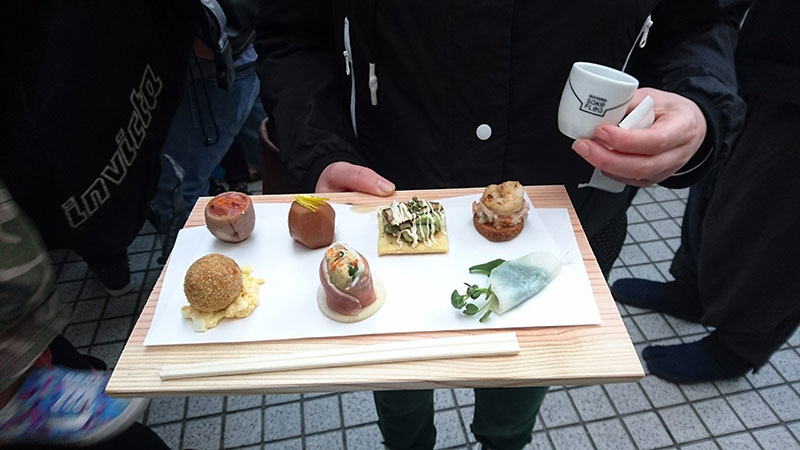

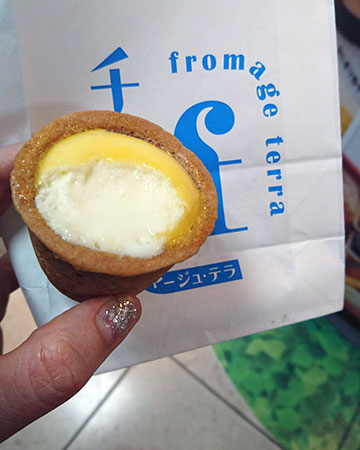

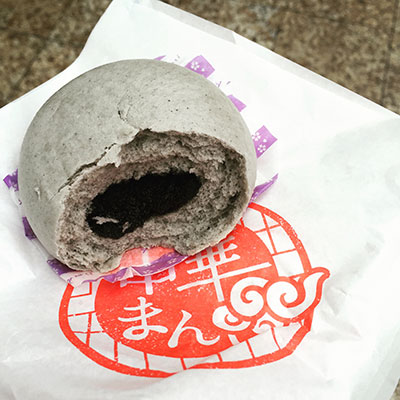



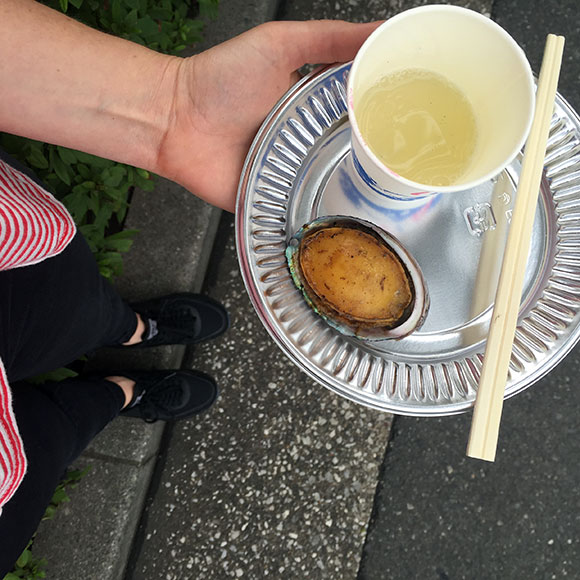
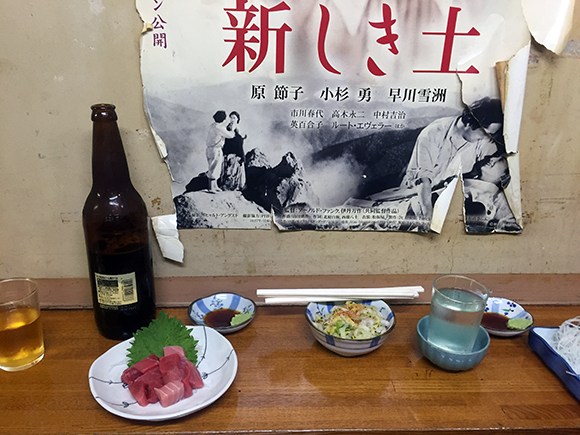
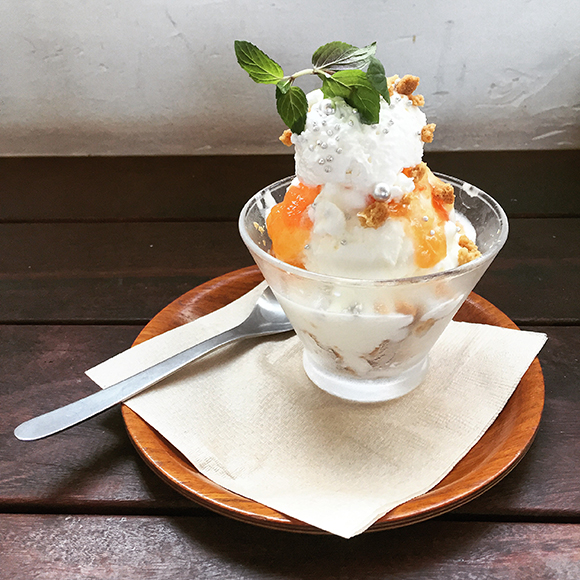
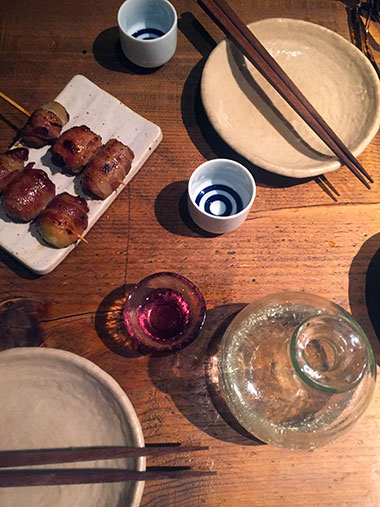

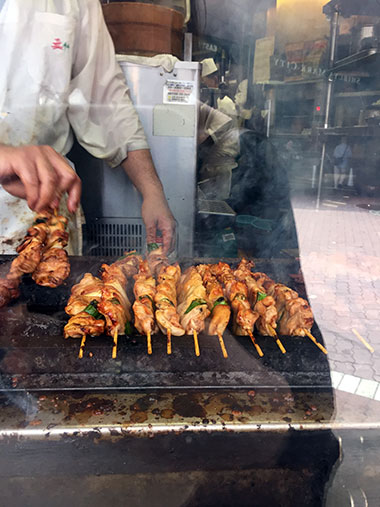
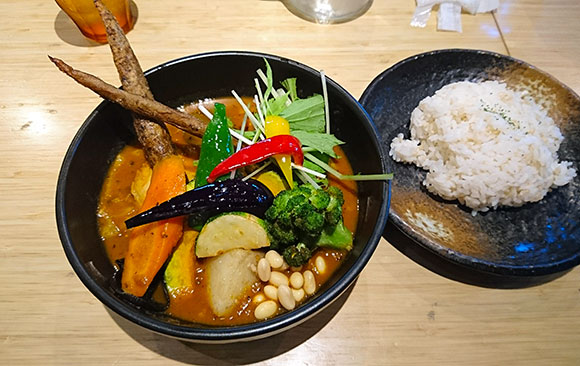
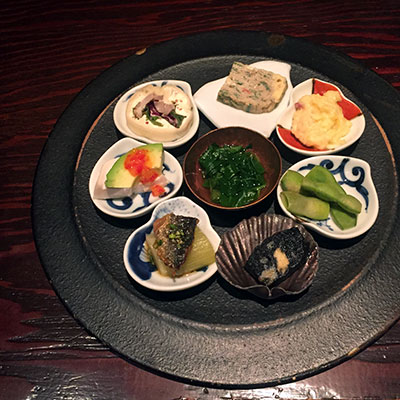

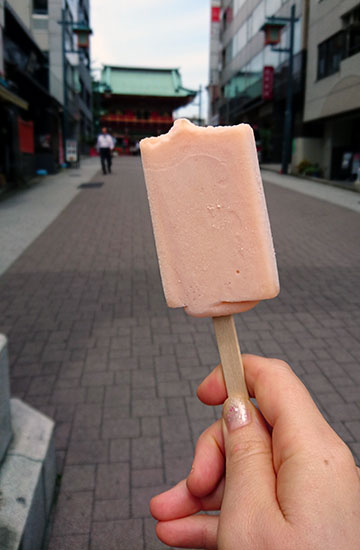
“The fact is, that, except at a few hotels in popular resorts which are got up for foreingers, bread, butter, milk, poultry, coffee, wine, and beer, are unattainable, that fresh fish is rare, and that unless one can live on rice, tea, and eggs, with the addition now and then of some tasteless vegetables, food must be taken, as the fishy and vegetable abominations known as ‘Japanese food’ can only be swallowed by a few, and that after long practice.”
- Isabella Bird (1831-1904), nineteenth century English explorer on Japanese food